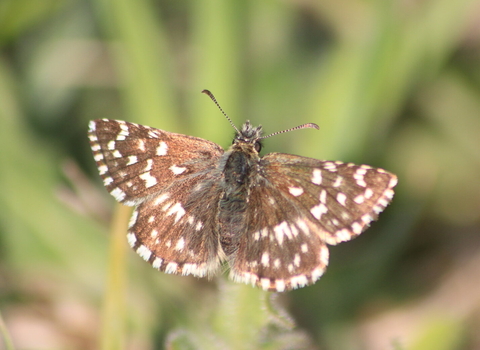
Grizzled skipper © Tom Hibbert

©Andrew Kerr
Grizzled skipper
The grizzled skipper has a striking brown-and-white checked wing pattern. It is a fast flier, so is best observed in the morning as it basks in the sun to warm up. It favours chalk grassland and woodland habitats.
Scientific name
Pyrus malvaeWhen to see
April to AugustTop facts
Category
Stats
Wingspan:2.3-2.9cmPriority Species under the UK Post-2010 Biodiversity Framework.
